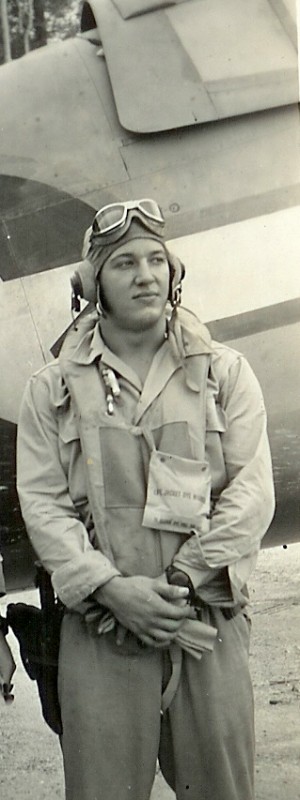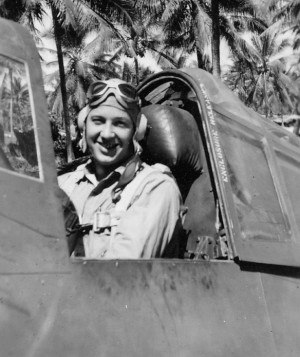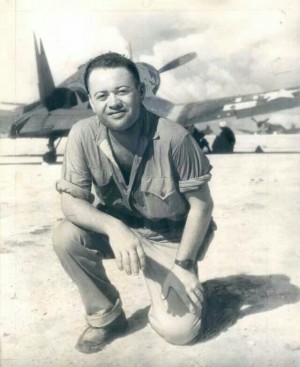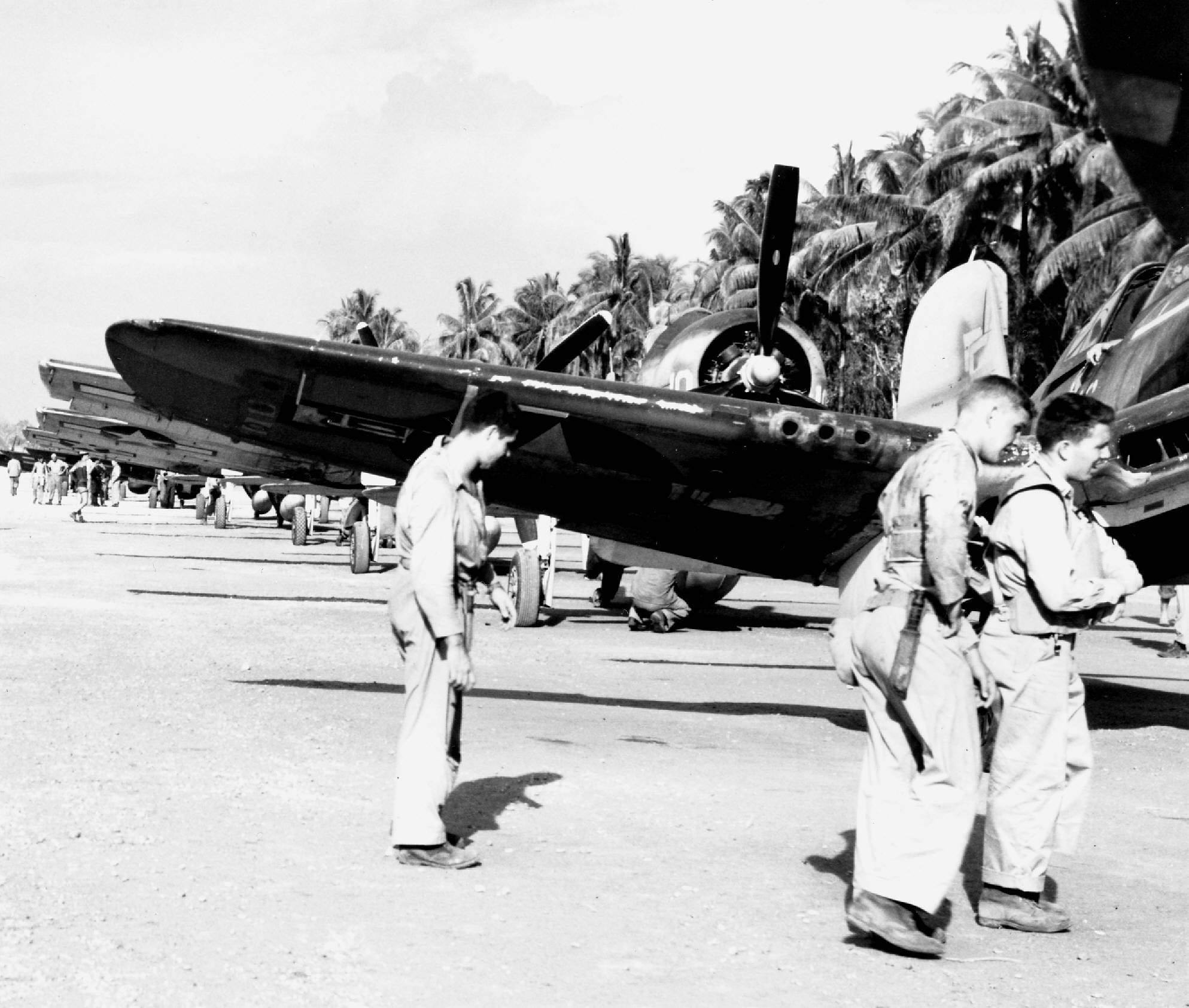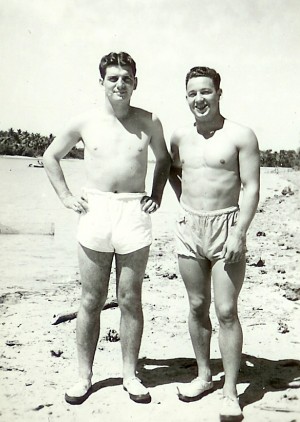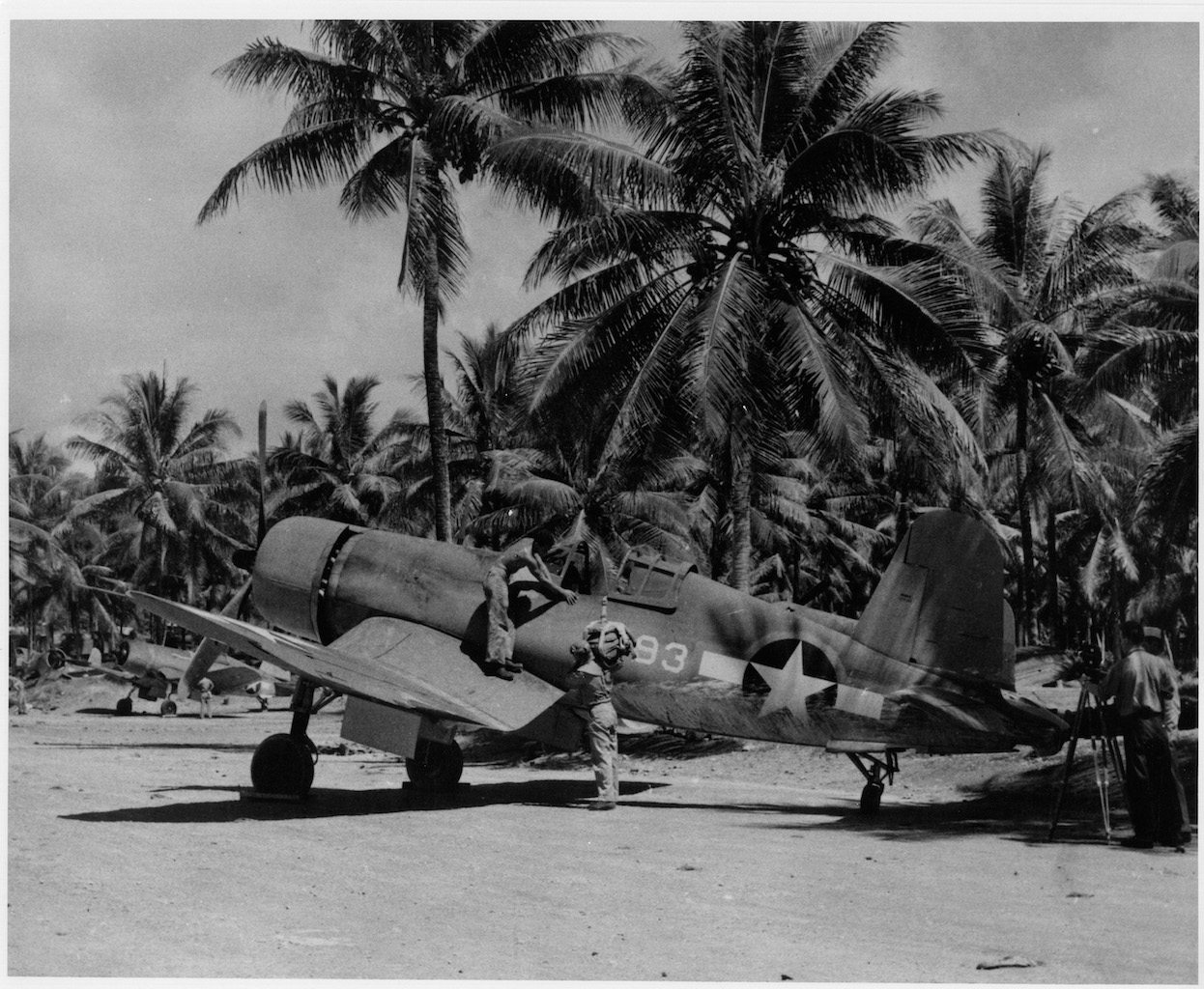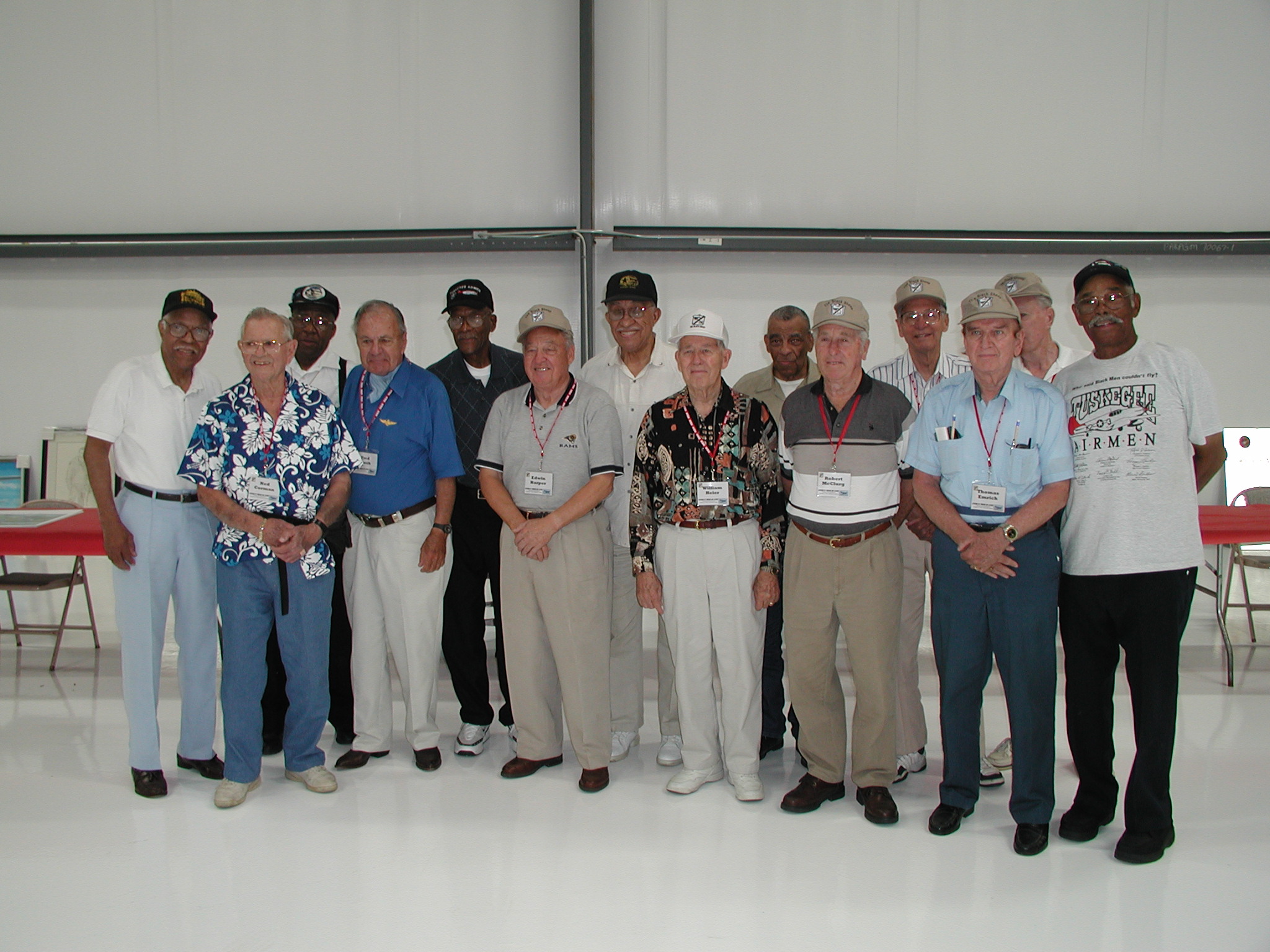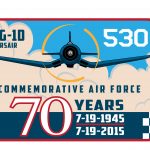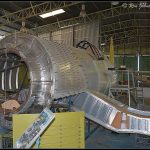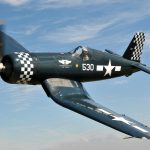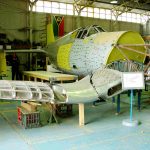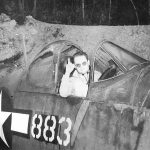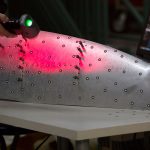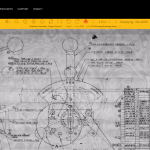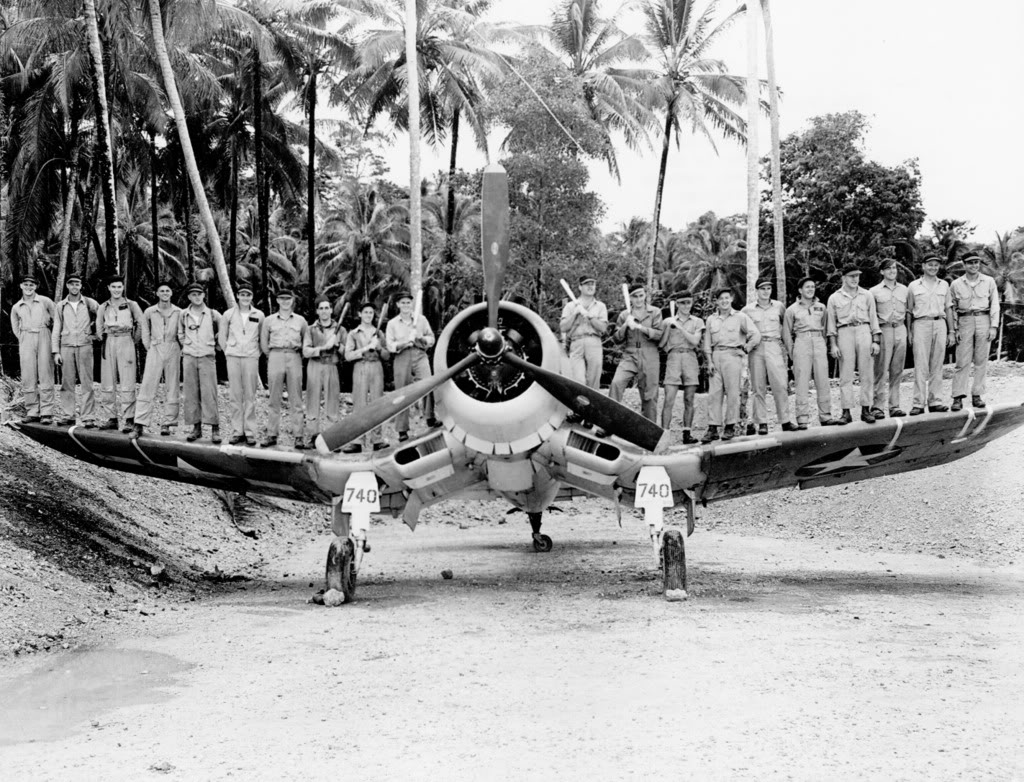
By Chris Henry
There are many famous characters and groups that exist through aviation history. Their names still exude excitement, honor, and courage against long odds. All of those adjectives describe the men of one of the most fabled units in Marine Corps history. The men of VMF-214, the Black Sheep. A fighter squadron that is a legacy in aviation history. Chris Henry was lucky enough, back in 2012, to have the chance to talk with Ed Harper, one of the founding members of the squadron.
“I was working my way through college cooking for a dorm. I was preparing a Sunday meal and someone ran in and yelled that the Japanese had bombed Pearl Harbor. My first question was “Where the hell is Pearl Harbor?” Just as so many brave men and women did, Ed decided he needed to be in the war effort. He hitched a ride to Spokane and walked through the doors of a Navy recruiting center. “Everyone was doing something. You had to go and sign up or something was wrong with you.” Up to that point Harper had never flown in an airplane. “My first flight was in the Yellow Peril or N3N. We did our elimination training and primary training in that. We flew out of a base in Seattle, WA. If you could make it through there, you got sent to NAS Pensacola to fly the SNJ. I really enjoyed the SNJ, it was a great airplane.” After that Ed would check out in the Grumman F4F Wildcat. “The Wildcat was a little tricky. It had narrow landing gear and there was a lot of trouble of young pilots ground looping them.” After earning your wings and becoming a commissioned naval aviator, you were sent to Chicago. There you would train on the USS Wolverine. It was an aircraft carrier that was constructed just to train pilots on the great lakes. “You had to make a few take offs and landings on it and then you were complete. It was a little tricky as you had to fly a little close to the water to approach it as it was smaller than a normal carrier.”
“It was at this time that I became a little disenchanted with the Navy. They were still licking their wounds from Pearl Harbor. They had pilots that were ready and trained up, but were waiting for more carriers to be built. I heard that the Marines were going to the fight faster, and switched to the Marine Corp.” Harper then shipped out for Miramar. From there they went South toward the south pole to avoid Japanese Submarines. “We all had to take turns keeping look out for subs”. They approached the South pacific from the south. When they first arrived they were stripped of their Wildcats and given the newer F4U Corsair. ‘We had to check out in the Corsair and once we had about 30 hours in it were considered combat ready.”
Navy and USMC units traditionally ship out as a unit to a forward base. Harper was not assigned to a unit. “I was there with a bunch of replacement pilots. A few had combat experience, but about 70% did not. We had nothing to do and no unit to report to. There was a unit coming out of service named the Swashbucklers. They had some tough times and limited success. It was decided that they were going to form a squadron using us homeless pilots. We were given the number VMF-214. And we were assigned a skipper. Maj. Greg Boyington. We knew he was a combat pilot that had been a Flying Tiger with Claire Lee Chennault in the American Volunteer Group. Most of us were in awe of him. He really was inspiring to the newer, lower time pilots. We originally had no planes and little equipment. Then from time to time we would “borrow” items from other units. We had borrowed planes and were based in the Russell Islands.” One evening in September a group of the men were hanging around together and the topic of conversation was coming up with a name for the newly formed unit. The name that the men originally came up with was “Boyington’s Bastards”. Harper was there in the tent that evening. “We decided on Boyington’s Bastards because of the unconventional manner in which we were created. Out of all of the USMC fighter Squadrons in WWII, only one was created in the theatre. And that was 214. There was a Marine Public affairs officer that was told about the name, and he said that if we had any success, it would never be printed because of the name. So we changed it to the Black Sheep. Then that very same night we designed the logo with the sheep, and the black bar. AT that time people did not realize that the black bar in the logo meant illegitimate. So we snuck the bastard part in on them anyway!”, Harper concluded laughing.
“Boyington was a great leader. He would never ask you to do something he would never do. A lot of the pilots that flew in Guadalcanal had the idea of flying as a team. One guy would shoot, while the other would watch his back. Not Pappy. Pappy said, if you see a chance to get a kill go for it. I will cover my tail just fine. He was definitely a non-standard leader. He felt more comfortable hanging around the men of his unit over other brass. That made him even more well received by his men. No one had personal aircraft. You would pile in a Jeep and drive down the line. Ground crews would give a thumbs up or down if that plane was good for that day or not. If you got a good one, then someone would just jump off and take it. Pappy always made sure he had the worst aircraft out of everyone else.” When asked about the rules on the ground, Harper had this to say, “Pappy had few rules in our unit. But the ones he did have, you had better listen to, because they would keep you alive.” “On my first mission, I was escorting some bombers. I can still remember the first time I saw enemy aircraft. It was almost surprising. You had studied for this moment, yet you were almost shocked to see them. I remember seeing the meatball on the wings for the first time and got this excited feeling.” 214 would go on to fight their way into history. They would amass a kill ratio of 11:1. This meant for every Corsair shot down, 11 Japanese aircraft would join it. They would gain a record of destroying or damaging 203 enemy aircraft. They would produce 9 aces, and had 97 air to air kills. “On one mission I was flying on Boyington’s wing while we lead a raid over Rabaul. We were ahead of about 100 aircraft. We let down over the harbor Pappy started to throttle back. I could not tell what he was doing. Then I saw something out of the corner of my eye. It was a Zero that was trying to make a run on us. We broke formation and I found myself behind another Zero. The pilot panicked and and sped up. Wrong decision. When the zero was at lower speeds they could out turn us. Once up at higher speeds, we could keep right with them. I fired some rounds and hit near the cockpit. I kept firing and saw a bunch of hits around the plane, with smoke and fire coming from it. Then in a dramatic turn dove into the water. I had my first kill. Then as I looked around I noticed that I had half of the Japanese air force behind me, and they were pissed off. So I climbed out of the area and found some big clouds and hid out. Then I egressed the area. Once you were out of the immediate combat zone you felt pretty safe. That was my only kill. I had seen many others, shot at a bunch and damaged a few more, but I never saw enough to make a claim. Besides we always know that a lot of the claims were BS. So I only claimed the one that I knew for sure that I downed.” I asked how he felt suddenly being left all alone, and he just laughed. “You know for some reason I was always one of those guys that found that they were returning to base all alone. And it was all dead reckoning. There were no navaids out there. We would just take note of which island we were near and head for home. Most of the islands were spaced so that we could see the next one while we were still over another. Luckily, most of the time the weather was pretty good for us on our missions.
Ed Harper had a love of the Corsair. “It was a big powerful beast. The Navy did not want them flying on to ships so they gave them to the Marines. It was rugged and would bring you home. Trust me I would know. “ What he is referring to is his mission on October 17th, 1943. During a dogfight he was wounded and his Corsair was heavily damaged. He was able to nurse the aircraft back to base at Munda Island. And in true fashion of that generation, the very next day, he was up there again. Flying a fighter sweep over enemy territory. On this day he would get a probable for a Zero that he tangled with. ‘When asked about his time in the Black Sheep he replied, “Well it was nothing like the TV show that is for sure. We didn’t have any danged nurses running around. Conditions were just awful. It was almost better to be flying. The TV Show that they made was really nothing like what we went through. After the first few episodes I didn’t watch it.” Harper’s Marine Corp service did not end there. He went on to fly in Korea and then during the Cuban Missile Crisis found himself on board the US Navy’s first Nuclear powered aircraft carrier, the USS Enterprise. “Our squadron was selected because we were day and night qualed. Our A-4’s were loaded, and we selected sites that we were going to hit, and the ordinance we would use. I had selected a missile site that I would be going after.” The men were told to go to bed and that they would be awakened when it was time. “That night when I went to sleep, my little A-4 was loaded and ready to go on the number one catapult. I went to sleep and when I woke up on my own, I could tell it was later. I went outside and found out that the crisis was over.” I asked him if he felt a sense of relief that he would not have to go in and was surprised by his response. “Hell no, I like to fight. I was really disappointed. There I was all dressed up for the dance and nowhere to go.”
At the end of his career Harper has spent 28 years in the Marines. During that time he had accumulated 97 combat missions during World War Two , 21 during Korea, and another 14 during Vietnam. He gained 13 medals including 3 Distinguished Flying Crosses, and 2 Purple Hearts. He has over 4,245 flight hours and 123 carrier landings. While most people associate Ed Harper as a Black Sheep veteran, others identify him as a legend of Marine Corp attack missions. He has made a very large impact in the Marine attack community. He was a program manager for the A-4 Skyhawk and an aircraft that itself would be a legend in Marine history, the AV-8 Harrier. The harrier is till flown today in the attack role, and the men based in Yuma, AZ trace their lineage right back to 214. Today VMA-214 calls themselves the Black Sheep. ‘Those guys wear the exact same logo that we made all of those years ago on out in the South West pacific. It is really something to think that our legacy still continues on to this day. “When I found out I was going to be flying Harriers in 214, you sort of just take a moment and realize that you are becoming a part of something really big”, says Capt Mark Maholchic of VMA-214. “I remember watching the TV show as a kid and reading the books about these men and this squadron. Now to be a member of that unit is something very special. The significance is not lost at all.”
In closing when I asked him about his Marine career Harper had this to say. “I am proud to have served and been an original member of 214. I enjoyed my time in the service and my time flying with Boyington and the Black Sheep. God, did Pappy love to fight, and so did I. I would have followed him anywhere.”
Interview recorded on December 2012.
About Chris Henry
Chris Henry works for the Experimental Aircraft Association in Oshkosh, WI. He has been working in aviation since he started as a young man volunteering at an air museum in Pittsburgh, PA. Through the years He has had the chance to sit down and talk with and interview many veterans and notable aviators, and loves to keep their legacy going to ensure future aviators have the chance to be inspired from aviations rich heritage.








